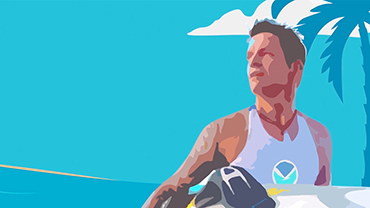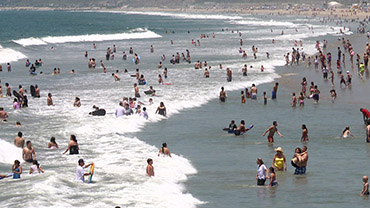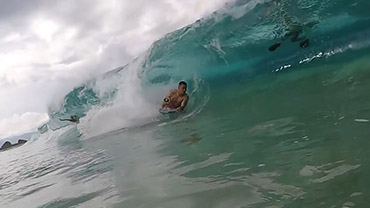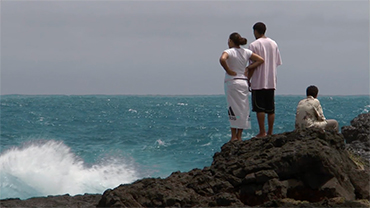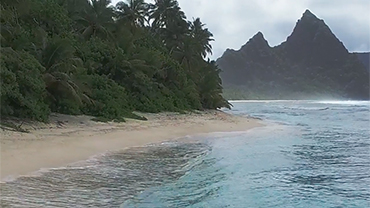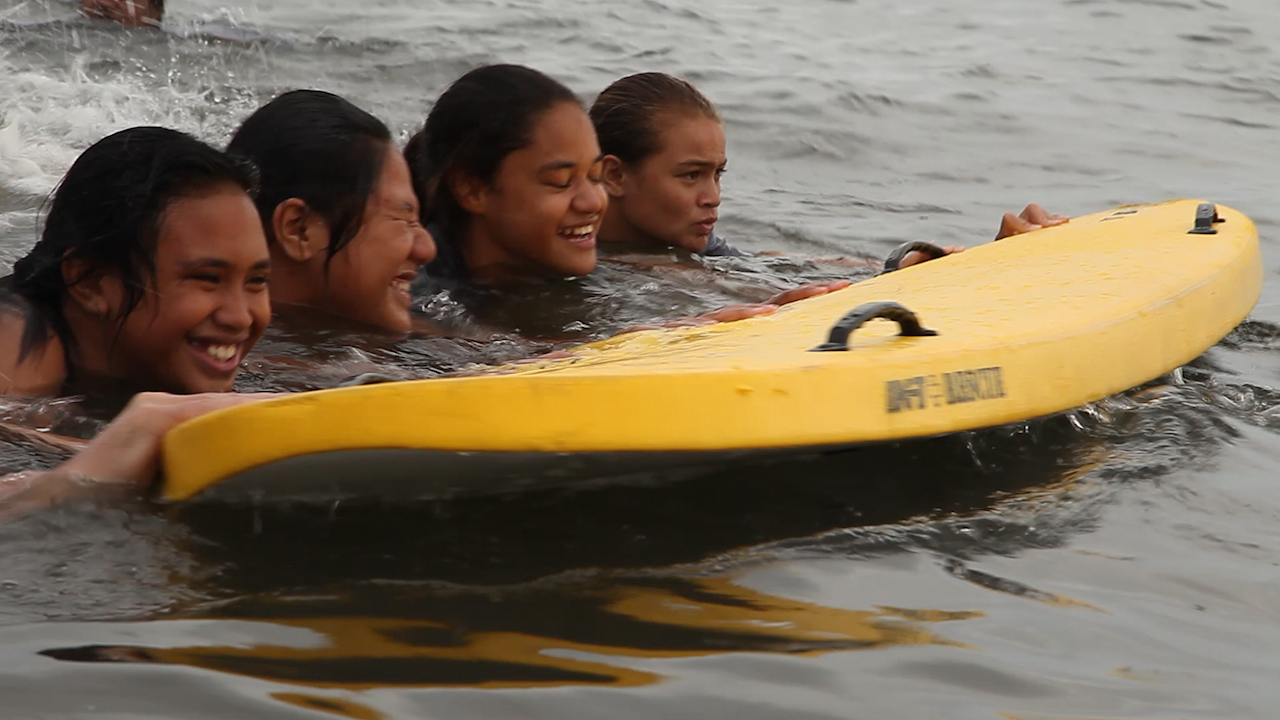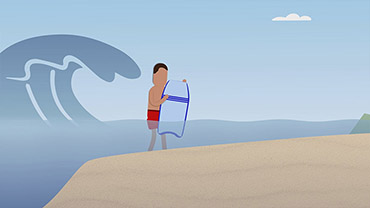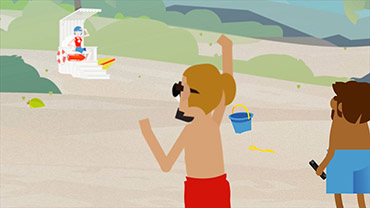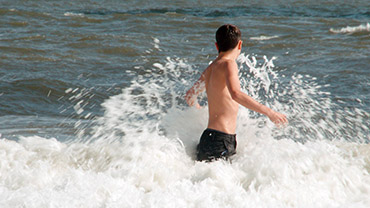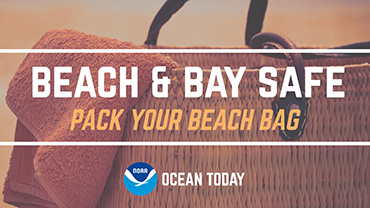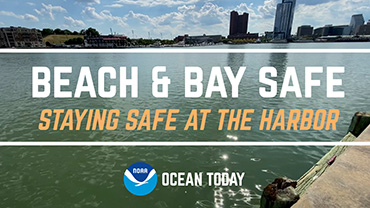Transcript
Millions of Americans visit the coast to enjoy the beach. And if you want to stay safe at the shore, it’s important to respect the ocean.
If you want to be wave safe, you need to know about the hazards, but knowing is not enough if you don’t also stay aware and alert.
When you drive, bike or walk to the beach you practice situational awareness - scanning for traffic, stop lights, signs and pedestrians to stay safe.
To stay safe at the beach, keep up your level of awareness whether you are on the sand or in the water.
It takes both what you know and what you see to keep you safe in the dynamic conditions on every shore.
In the Northwest, sneaker waves can pull you into frigid waters.
In Hawai’i powerful shorebreaks can crush you.
In California great surfbreaks can quickly become dangerous waves.
Your beach experience stays safe and fun, by being prepared for these and other hazards.
Every time you move through the water you pass through three zones: the safe zone, the awareness zone, and the impact zone.
Your journey begins at the safe zone, the area where waves can’t reach you.
Look, Watch and study the weather, water and land from a safe zone.
Closer to the water or on the sand is the awareness zone. Watch for warning signs, flags and lifeguard stands. Always stay alert to changing weather, waves and tides. Make an action plan here on how to both enter the water and get back to safety.
Where the waves meet the land is the Impact Zone. Staying safe here means knowing how to safely navigate or avoid potentially dangerous conditions and how to get help when there’s trouble.
We want you to be safe on any shore from New Jersey to American Samoa. Before your feet hit the sand, join us as we visit American coasts in the Ocean Today Wave Safe series.
Transcripción
Millones de americanos visitan la costa para disfrutar de la playa. Si quiere mantenerse seguro en la playa, es importante respetar el océano.
Si quiere mantenerse seguro contra el oleaje, debe conocer los riesgos, pero conocerlos no es suficiente si no está además atento y alerta.
Al conducir, ir en bicicleta o caminar hacia la playa usted practica estar atento a sus alrededores - vigilando el tráfico, semáforos, otras señales y a los peatones para mantenerse seguro.
Para mantenerse seguro en la playa, esté alerta ya sea si se encuentra en la arena o en el agua.
Se necesita tanto lo que sabe como lo que ve para mantenerse seguro con las condiciones dinámicas en cada playa.
En el noroeste (de los E.E.U.U.), las olas sorpresa pueden arrastrarlo hacia aguas gélidas.
En Hawái, las potentes olas rompientes en la orilla le pueden aplastar.
En California, los bancos de surf pueden provocar rápidamente olas peligrosas.
Su experiencia en la playa se puede mantener segura y divertida, al estar preparado para estos y otros riesgos.
Cada vez que se mueve en el agua, atraviesa tres zonas: la zona segura, la zona de vigilancia, y la zona de impacto.
Su trayecto comienza en la zona segura, el área donde el oleaje no le puede alcanzar.
Mire, vigile y estudie las condiciones del tiempo, el agua y la tierra desde una zona segura.
Más cerca del agua o en la arena está la zona de vigilancia. Esté atento a las señales de alerta, banderas y casillas de los salvavidas. Siempre preste atención a las condiciones cambiantes del tiempo, el oleaje y las mareas. Cree un plan de acción para cómo entrar en el agua y retornar a un lugar seguro.
Donde las olas tocan la tierra se encuentra la zona de impacto. Mantenerse seguro aquí significa saber cómo navegar o evitar condiciones potencialmente peligrosas y cómo conseguir ayuda cuando surja un problema.
Queremos que se mantenga a salvo en cualquier orilla desde Nueva Jersey hasta la Samoa Americana. Antes de que sus pies toquen la arena, síganos mientras visitamos las costas americanas en la serie de Oleaje Seguro de Ocean Today.
 An official website of the United States government.
Here's how you know we're official.
An official website of the United States government.
Here's how you know we're official.

